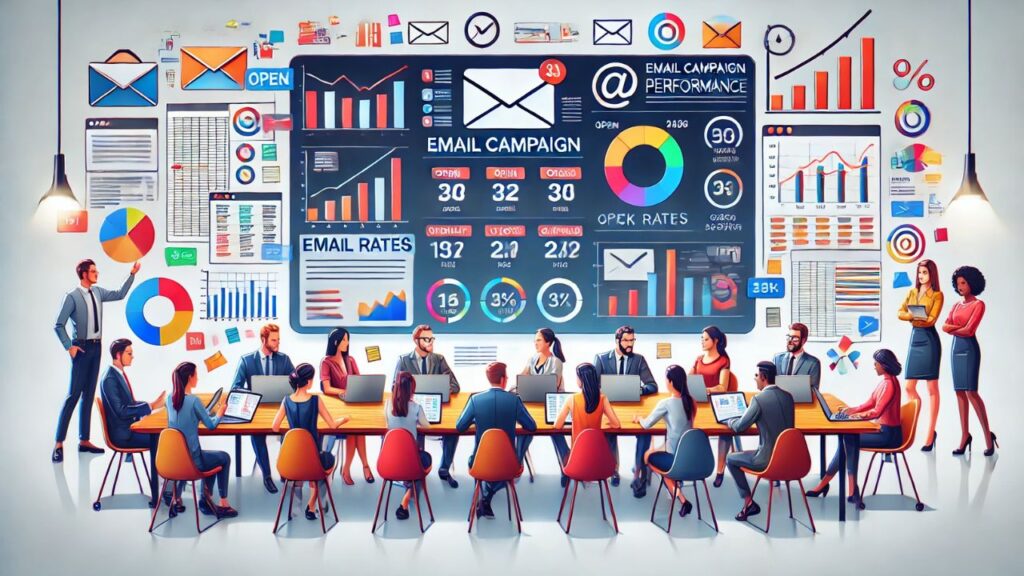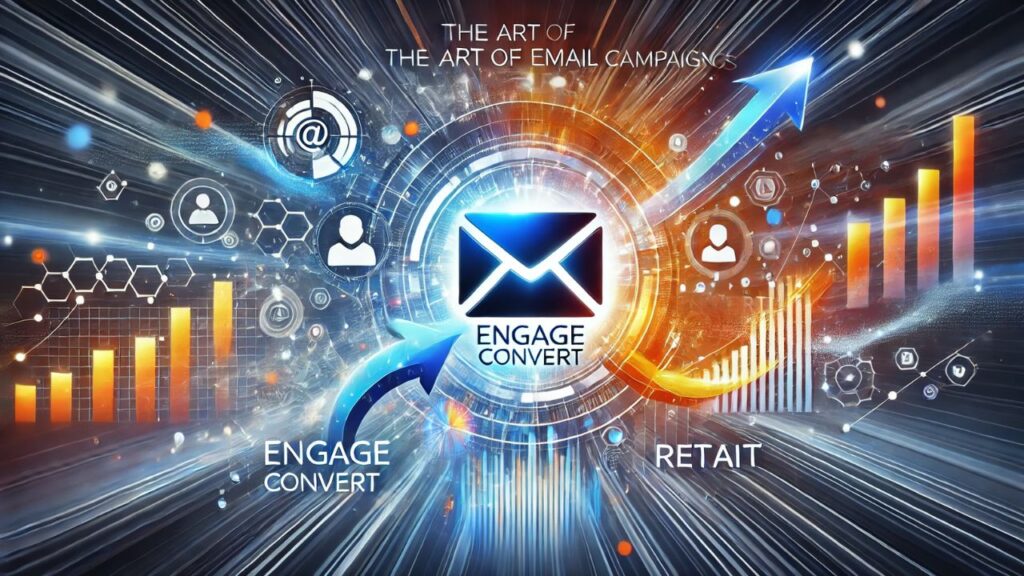In the fast-evolving world of digital marketing, email campaigns remain a cornerstone of successful communication strategies. They bridge the gap between brands and their audiences, offering a direct and measurable way to engage, convert, and retain customers. However, crafting an email campaign that resonates with recipients requires a mix of strategy, creativity, and technical knowledge. This blog explores the art of designing effective email campaigns, offering actionable insights and best practices to maximize impact.
Table of Contents
Understanding the Fundamentals of Email Campaigns
Email campaigns are more than just sending out promotional messages. They involve a structured approach to delivering the right content to the right audience at the right time. Before diving into advanced tactics, it’s crucial to understand their foundational elements.
Defining Campaign Objectives
Every email campaign starts with a clear objective. Whether the goal is to promote a product, nurture leads, or announce an event, having a well-defined purpose sets the tone for every subsequent step. Common objectives include:
- Increasing brand awareness.
- Driving website traffic.
- Boosting sales or conversions.
- Building long-term customer relationships.
Understanding Your Audience
Effective email campaigns cater to specific audience segments. Use customer data to identify preferences, pain points, and behavioral patterns. This ensures your emails speak directly to the recipient’s needs, fostering stronger engagement and better results.
The Importance of List Segmentation
Segmentation divides your email list into smaller, targeted groups based on demographics, purchase history, location, or behavior. By tailoring content for each segment, you can improve open rates, click-through rates, and overall campaign effectiveness.
Ensuring Compliance with Email Regulations
Adhering to email marketing regulations, such as GDPR, CAN-SPAM, and other regional laws, builds trust and avoids legal issues. Ensure recipients have opted into your emails and provide clear options to unsubscribe.
Crafting the Perfect Email: Best Practices
Designing an effective email is both an art and a science. It requires attention to content, design, and user experience.
Here’s a breakdown of what makes an email campaign stand out:
Write Attention-Grabbing Subject Lines
The subject line is your first impression, determining whether your email gets opened or ignored. Effective subject lines are:
- Short and concise (aim for under 60 characters).
- Intriguing, sparking curiosity or interest.
- Relevant to the recipient’s needs or preferences.
Focus on Personalization
Personalized emails perform significantly better than generic ones. Incorporate the recipient’s name, location, or recent interactions with your brand into the content. Personalization fosters a sense of connection and increases the likelihood of engagement.
Use a Clear and Engaging CTA
A call-to-action (CTA) guides recipients toward your desired outcome, whether it’s visiting a webpage, signing up for an event, or making a purchase. Ensure your CTA is:
- Visually distinct (e.g., a button or bold text).
- Action-oriented, using phrases like “Shop Now,” “Learn More,” or “Sign Up Today.”
- Positioned strategically within the email for visibility.
Optimize for Mobile Devices
With most emails now being opened on mobile devices, mobile optimization is non-negotiable. Use responsive design, legible fonts, and clear visuals to ensure your emails look great on all screen sizes.
Balance Text and Visuals
The right balance between text and visuals is essential for readability and engagement. Avoid overwhelming your audience with large blocks of text or excessive images. Use white space to create a clean and professional look.
Test Before You Send
Testing helps identify potential issues before an email reaches your audience. A/B testing allows you to experiment with different subject lines, layouts, or CTAs to determine what resonates best with your recipients.
Email Automation: Efficiency Meets Personalization
Email automation is a powerful tool that allows marketers to deliver targeted messages at scale. By automating repetitive tasks, you can save time while maintaining a personalized approach.
Welcome Emails
Welcome emails set the tone for your relationship with new subscribers. They typically include a warm introduction, helpful resources, and a clear CTA to explore your products or services further.
Drip Campaigns
Drip campaigns involve sending a series of pre-written emails triggered by user actions or specific time intervals. They’re ideal for lead nurturing, onboarding, and re-engagement efforts.
Transactional Emails
Transactional emails, such as order confirmations, shipping updates, and account notifications, offer an opportunity to reinforce brand trust. Ensure these emails are clear, concise, and visually appealing.
Behavioral Triggers
Behavioral email campaigns are based on user interactions, such as abandoned cart reminders or product recommendations. By addressing specific actions, these emails feel timely and relevant.
Analyzing Email Campaign Performance

No email campaign is complete without measuring its performance. Understanding key metrics provides insights into what’s working and where improvements are needed.
Open Rate
The open rate measures the percentage of recipients who opened your email. Factors influencing open rates include subject lines, sender name, and timing.
Click-Through Rate (CTR)
CTR tracks the percentage of recipients who clicked on links within your email. It reflects how effectively your content and CTAs drive engagement.
Conversion Rate
The conversion rate shows how many recipients completed the desired action, such as making a purchase or signing up for a service. It’s the ultimate measure of campaign success.
Bounce Rate
Bounce rate indicates the percentage of emails that weren’t successfully delivered. A high bounce rate may suggest issues with your email list or sender reputation.
Unsubscribe Rate
Monitoring the unsubscribe rate helps identify whether your content aligns with audience expectations. Frequent unsubscribes may signal the need for better segmentation or more relevant content.
Strategies to Retain and Delight Subscribers
Retention is just as important as acquisition. Keeping your subscribers engaged ensures long-term loyalty and maximizes the value of your email marketing efforts.
Consistent Value Delivery
Deliver value consistently by sharing useful information, exclusive offers, and engaging content. Ensure every email has a clear benefit for the recipient.
Leverage Feedback
Encourage subscribers to share their thoughts through surveys or feedback forms. Use their input to refine your campaigns and address their preferences.
Exclusive Content and Offers
Reward loyal subscribers with exclusive discounts, early access to products, or VIP content. This reinforces the value of staying subscribed to your list.
Re-Engagement Campaigns
Identify inactive subscribers and send re-engagement emails to reignite their interest. Include compelling incentives, such as special offers or updated product features.
Emerging Trends in Email Campaigns
Email marketing is constantly evolving. Staying ahead of trends can help you maintain a competitive edge and ensure your campaigns remain relevant.
Interactive Emails
Interactive elements, such as polls, quizzes, and sliders, encourage recipient engagement directly within the email. These features make emails more dynamic and memorable.
AI-Powered Personalization
Artificial intelligence enables advanced personalization, from recommending products based on past behavior to predicting optimal send times.
User-Generated Content (UGC)
Incorporating UGC, such as customer reviews or social media posts, adds authenticity to your emails and builds trust with your audience.
Dark Mode Optimization
As more users adopt dark mode for their devices, optimizing your email design for both light and dark modes ensures a seamless experience.
Conclusion
Mastering the art of email campaigns requires a blend of strategy, creativity, and data-driven decision-making. By focusing on engaging content, thoughtful design, and continuous optimization, you can create campaigns that capture attention and drive meaningful results. Whether your goal is to engage new leads, convert potential customers, or retain loyal subscribers, a well-executed email campaign is a powerful tool in your digital marketing arsenal.
By implementing the practices discussed in this blog, you’ll be well-equipped to elevate your email marketing efforts and foster long-lasting relationships with your audience.
Frequently Asked Questions (FAQ)
1. What are email campaigns?
Email campaigns are a series of targeted emails sent to a specific group of recipients to achieve a marketing objective, such as promoting products, nurturing leads, or engaging existing customers. These campaigns are designed with clear goals, such as increasing brand awareness, driving website traffic, or boosting sales.
Why is email marketing important for businesses?
Email marketing offers a direct, personal, and measurable way to communicate with your audience. It allows businesses to:
Build relationships with customers.
Drive traffic to websites or physical stores.
Promote products or services cost-effectively.
Retain loyal customers through regular engagement.
Analyze performance through detailed metrics.
3. How do I build an email list?
Building an email list involves collecting contact information from potential or existing customers who opt to receive communications from you.
Here are a few strategies:
Use sign-up forms on your website or blog.
Offer lead magnets like free guides, discounts, or exclusive content.
Collect emails at events or during in-store visits.
Use social media campaigns to encourage subscriptions.
Always ensure you’re obtaining explicit consent to comply with email regulations.



